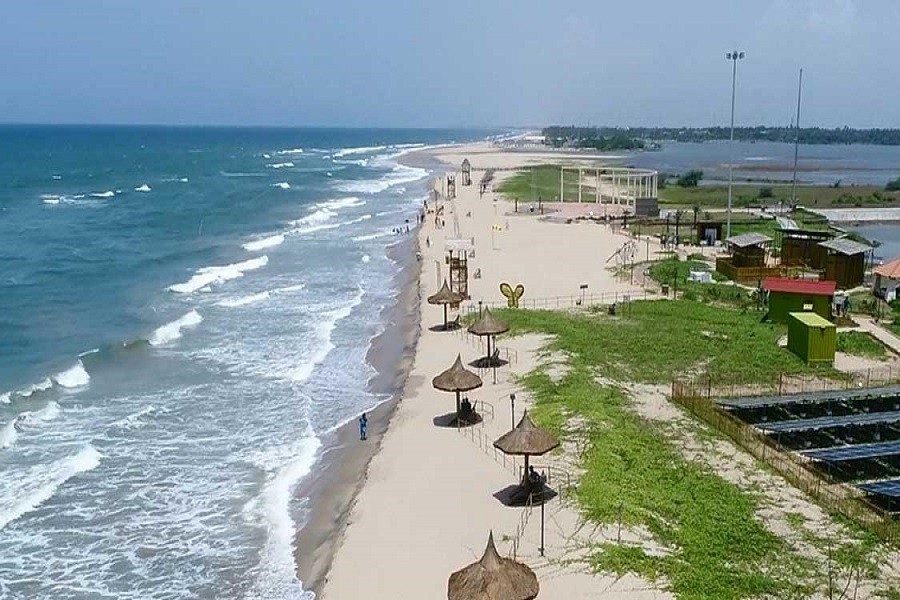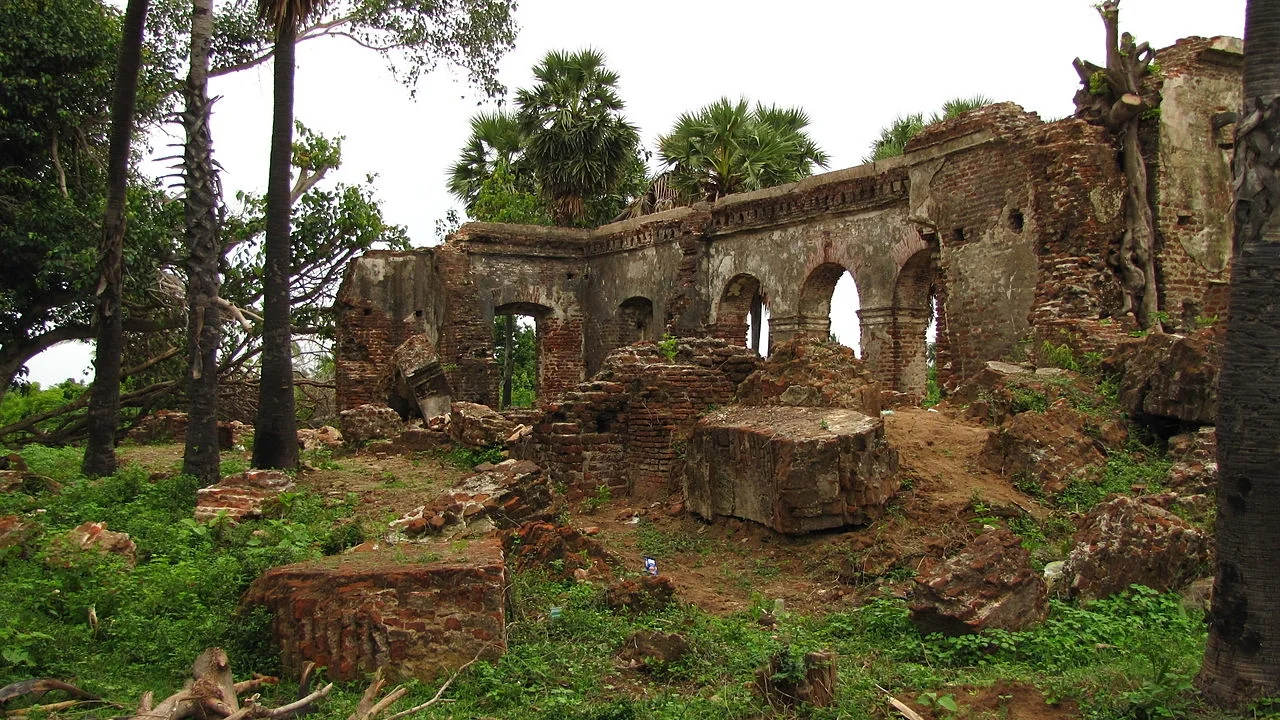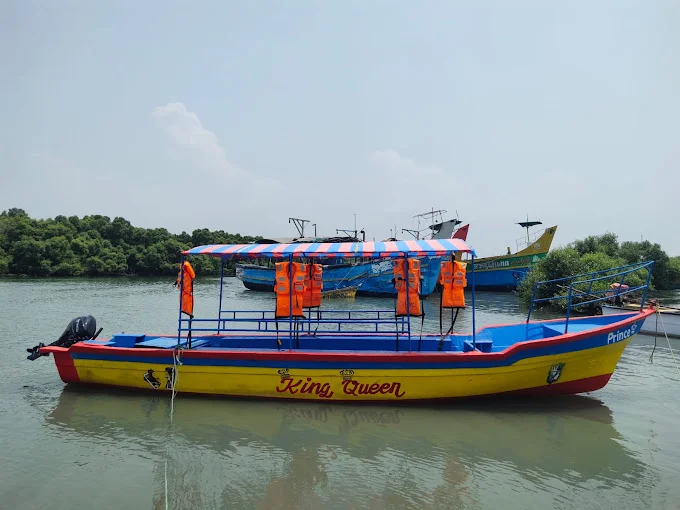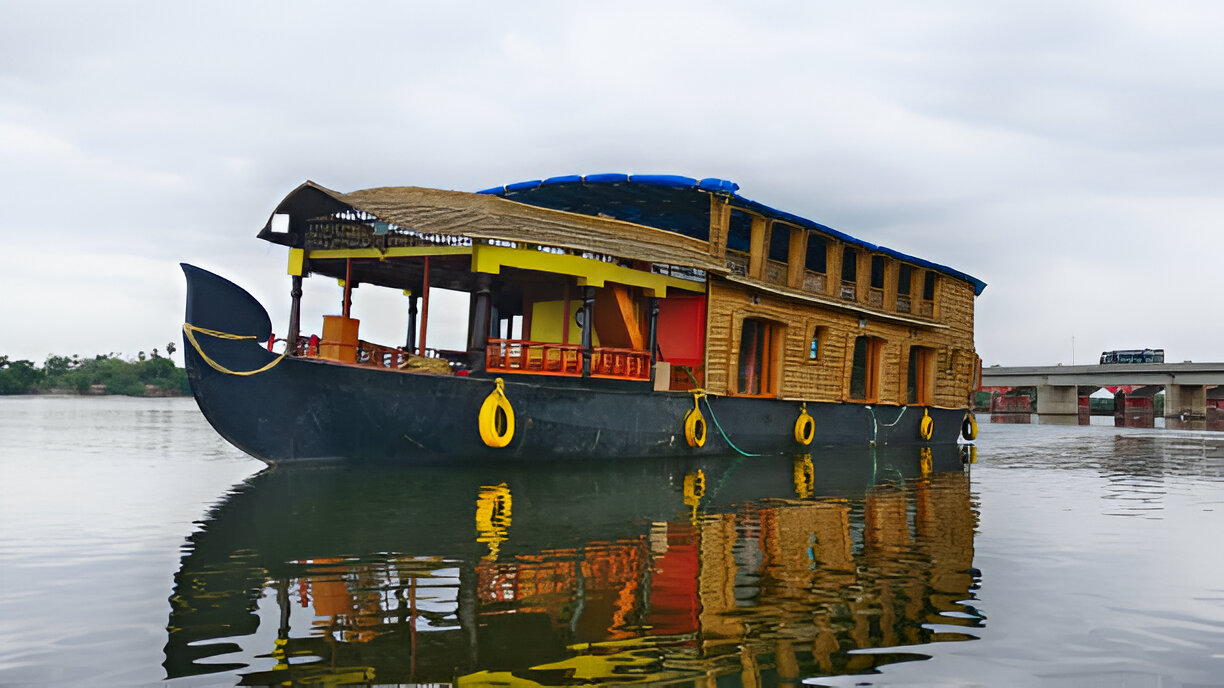Top 5 Offbeat Places in Pondicherry You Must Visit in 2025
Nestled on India’s east coast, Pondicherry (Puducherry) is often praised for its French Quarter and beaches. But beyond the usual attractions lie many hidden gems of Pondicherry – tranquil spots off the beaten path that appeal to eco-tourists and offbeat travelers. From a Blue-Flag beach and a reforested sanctuary to ancient ruins, these locations offer unique things to do in Pondicherry. In 2025, make time to explore these unexplored Pondicherry spots – you’ll find nature walks, birdlife, and history far from the city crowds.
Offbeat Places in Pondicherry
| S.No. | Offbeat Places in Pondicherry | Rating |
|---|---|---|
| 1 | Eden Beach | 4.5 |
| 2 | Sadhana Forest | 4.3 |
| 3 | Relics of Arikamedu | 4.4 |
| 4 | Ousteri Lake | 4.5 |
| 5 | Princess Boating Adventure (Mangrove Forest Boating) | 4.3 |

Eden Beach (Chinna Veerampattinam)-Pondy’s Pristine Blue Flag Paradise
Eden Beach in Chinna Veerampattinam (about 12 km south of central Pondicherry) is one of the city’s eco-tourism successes. It’s the first Blue Flag beach in the Union Territory, meaning it’s recognized globally as extremely clean and environmentally friendly. The sand here is bright white and well-kept, and the gentle surf is kept safe by lifeguards (an 800-meter swimming zone is marked out). It’s quieter than the popular Promenade Beach, so you can enjoy sunrise or sunset in peace. In winter (Oct–Mar) migrating shorebirds like golden plovers and oystercatchers often visit, making it a small bird-watching hotspot.
- What makes it unique: Eden Beach is prized for its clean sand and sustainable facilities (shade huts made from coconut thatch, solar lighting, and waste-treatment plants). As Holidify notes, it “flaunts super clean surroundings” and is a birdwatcher’s delight in winter.
- How to reach: The beach is ~12 km south of White Town. You can take a local bus or hire a taxi/auto-rickshaw via Ariyankuppam (Maraimalai Adigal St.). Many tourists also rent scooters to drive here.
- Best time to visit: Early morning or late afternoon (especially just before sunset) for cooler weather and great views. Winter (Oct–Mar) is also ideal for birdlife. The beach is open 6:00 AM–6:00 PM daily, and entry is free.
- Tips: Pack water and sunscreen (little shade apart from huts). Keep an eye on the tide and swim only in the marked safe zone. Carry binoculars if you enjoy birding. Remember to take any trash back out (signs politely urge visitors to “stop littering and leave your footprints” only).
Sadhana Forest-Reforesting Hope, One Tree at a Time
Sadhana Forest is a 70-acre reforestation and eco-village project on Pondicherry’s outskirts (near Auroville). What was once barren coastal land has been transformed by volunteers into lush woodland and food forests. Over 27,000 trees have been planted here over 15 years, and most are thriving. The community lives by strict sustainable principles: it’s a zero-waste zone (their motto is “use it up, wear it out… or go without”) and even a “vegan paradise” with no animal products in meals. Visitors can tour the farm, see rainwater harvesting, compost toilets, and learn about their rocket stoves and permaculture gardens (the team even powers kitchen blenders by bicycle).
- What makes it unique: This is hands-on eco-tourism – you’re in a living example of sustainability. Sadhana Forest teaches conservation through practice. You can walk the trails, observe young food forests, or even participate in tree-planting if you stay as a volunteer. The quiet, green setting is a nice contrast to Pondy’s beaches.
- How to reach: Sadhana Forest is located in Kuilapalayam near Auroville (about 20 km north of Pondicherry). Buses and shared autos run toward Auroville/Pazhaverkadu; from Auroville you can get a short ride to the entrance. Many visitors hire a taxi.
- Best time to visit: Winter and spring (Oct–Mar) are most pleasant, avoiding the monsoon rains and extreme heat. The project is open year-round (no entry fee), but volunteer accommodations (if you want to stay) require advance arrangement.
Tips: Dress modestly and take off shoes in buildings. Bring refillable water bottle and snack (they serve a simple vegan meal if you join a program). Since this is a working community, follow signs and volunteer guidelines. Sunset at Sadhana’s tree farms can be beautiful.

Relics of Arikamedu-Where Rome Once Met Tamil Nadu
Arikamedu (on the Ariyankuppam river, ~4–5 km from Pondicherry) is a small but fascinating archaeological site – a true hidden gem for history buffs. In ancient times it was a bustling Indo-Roman port known as “Poduke”. Excavations (starting in the 1940s) have revealed clay amphorae, Roman lamps, colored glassware and beads – evidence of trade between South India and the Roman/Byzantine world from around 2nd century BCE into the early medieval period. When you visit today you can see low brick walls, mossy columns and French-era mission ruins along the riverbank. It feels like stepping into a centuries-old tale – as one travel guide puts it, “allow the echoes of past generations to guide your steps” here.
- What makes it unique: Arikamedu is one of the few places in India where you can stand on an ancient Indo-Roman harbor site. Unlike a museum, you walk among the sun-baked ruins in a quiet village setting. It’s off the tourist radar (no crowds), so you’ll have time to imagine the old trading port. Plus, nearby artisans still make beads and muslin, linking past and present.
- How to reach: The site is just 4 km southeast of Pondicherry’s center, in the village of Kakkayanthope/Ariyankuppam. Autos or rented bikes can get you there easily. The Pondicherry Tourism site notes it is on the Ariyankuppam riverbank.
- Best time to visit: Morning (around 10 AM when it opens) is good to avoid the midday sun. Arikamedu is open 10:00 AM–4:00 PM daily, and entry is free. Visit on a clear day to see details of the ruins against the blue sky.
Tips: Wear a hat and carry water – there is little shade. Bring your own knowledge guidebook or ask a local guide (some are usually on-site) to explain the artifacts. Take photos: broken urns and beads are quietly displayed. Also explore nearby Paradise Beach (a short boat ride across Chunnambar River, just south of Arikamedu) if time permits.
Ousteri Lake-The Silent Sanctuary of Migratory Birds
Also called Oussudu Lake, Ousteri Lake lies about 10 km northwest of Pondicherry city (along Vazhudavoor Road). It’s a large freshwater lagoon famed for its bird life and serene vistas. In fact, the International Union for Conservation of Nature (IUCN) has listed it as an important Asian wetland. In winter, dozens of migratory species flock here – painted storks, herons, egrets, lapwings and more – often hundreds at a time. Locals and visitors relax along its grassy banks or take boat rides on the calm waters amid lotus and mangrove fringe.
- What makes it unique: Ousteri is the only natural freshwater lake in the Pondicherry region. Its size (~390 ha within Puducherry) and rich birdlife give a very different feel compared to the sea beaches. It’s peaceful and relatively undeveloped, perfect for eco-tourism. The Pondicherry government runs a boating program here, emphasizing nature sightseeing.
- How to reach: The lake is roughly 10 km from Pondicherry’s bus stand. Buses toward Villupuram via Veerampattinam pass nearby, or you can take a taxi/auto. The lake’s parking area is clearly signposted on the way to Villupuram.
- Best time to visit: October–March is ideal: the weather is cool and 40+ migratory birds are present. Arrive early morning (6–9 AM) to see birds feeding and the sunrise reflecting on the water. The lake is open 9:00 AM–5:00 PM daily, with no entry fee.
Activities & Tips: The highlight is boating – inexpensive rides start around ₹100 per person. Take a guided boat to learn bird names (the driver will point out species like painted storks, white ibis and spotted owlets). Bring binoculars and a camera. You can also stroll the shore paths for sunrise/sunset views. (Local snack stalls serve homey treats if you get hungry.) Remember to stay on marked paths or boats – feeding or disturbing wildlife is discouraged to protect the sanctuary.

Princess Boating Adventure (Mangrove Forest Boating)
For a truly offbeat adventure, head to Pondicherry’s mangrove forests by boat. Operators like Princess Boating Adventure specialize in this: they run guided cruises through the tidal mangrove canals near Arikamedu and the river mouth. At dawn or dusk, their aluminum boats skirt through thick green mangroves, where kingfishers, herons and osprey may be seen feeding. These tours often offer early-morning or late-evening departures – a romantic sunrise or sunset boat ride – and even include opportunities for on-board bird watching or catch-and-release fishing. It’s a peaceful way to experience Pondicherry’s coastal ecosystem up close, far from the city roads.
- What makes it unique: Most visitors don’t realize Pondicherry has a mangrove-lined estuary just outside town. This forest-boat tour is both adventurous and educational. You’ll glide past red mangrove roots, watch fiddler crabs scuttle and possibly spot crocodile tracks. The brochure promises “unforgettable” nature encounters.
- How to book/where to go: Princess Boating Adventure is based near Puducherry (they list an office by Marina Beach). You can book via their website or local travel agents. They run several 1-hour tours in the morning or evening (e.g. 7–8 AM or 5–6 PM). There are other local operators too (one typical rate is about ₹500 per adult, ₹250 per child, for an hour; rates may vary).
Tips: Wear insect repellent and a hat, and sunglasses are a must with sun glinting off water. Carry a camera/phone (go pro) on waterproof setting. Book in advance – small boats fill up. The early slot is often best for spotting birds. And sit quietly during the tour to hear mangrove sounds (you might hear kingfisher calls or spot a mangrove snake!). Life jackets are provided for safety.
Conclusion:
Each of these offbeat places reveals a different side of Pondicherry. You can lounge on Eden Beach’s pristine sands and appreciate why it earned a Blue Flag for cleanliness. You can wander Sadhana Forest’s young canopy, seeing firsthand 27,000+ new trees in a coastal forest project. You can walk among Arikamedu’s ruins and imagine Indo-Roman traders with their amphorae and glass beads. Or glide in a boat through mangroves or lotus-fringed lakes at sunrise. These spots are often quiet and uncrowded, so they feel magical and personal – a sharp contrast to the busy promenade or cafés.
Pondicherry’s charm goes well beyond its French architecture. In 2025, consider adding these unique and unexplored Pondicherry experiences to your travel plans. Whether you seek eco-tourism adventures, cultural history, or simply peace in nature, these five hidden gems will make your trip unforgettable. Pack a camera, an open mind, and get ready to discover a different Pondicherry waiting off the beaten path!
FAQs (Frequently Asked Questions)
These spots offer a different experience than the usual tourist circuit. You’ll escape the crowds and discover Pondicherry’s hidden gems. For example, Eden Beach’s tranquil white sands and Blue Flag status contrast with the busy city shores. Sadhana Forest gives a glimpse into eco-living, while Arikamedu connects you with ancient Indo-Roman history. If you love nature or culture, they’re unique things to do in Pondicherry that few foreign tourists know about.
Generally, October through March is best. The weather is pleasant and wildlife is active. For bird enthusiasts, winter migration peaks (see Ousteri Lake and Eden Beach descriptions above). Monsoon season (June–Sep) brings heavy rains to Puducherry, so some sites are muddy or slippery then (the tourism board suggests avoiding Sadhana Forest and Ousteri Lake in rains).
All sites are accessible by road. Most travelers rent a scooter or hire a taxi for a day. Eden Beach and Arikamedu are only 10–15 minutes from the city (around 4–12 km) by auto-rickshaw. Ousteri Lake is about 10 km out on Vazhudavoor Road, reachable by local bus or cab. For Sadhana Forest, buses go to Auroville, then you switch to local transport. Princess Boating docks near the city (by Marakkanam or Arikamedu area), and operators often pick you up from Pondy.
All these places have no mandatory entry fee for visitors. Eden Beach, Arikamedu and Ousteri Lake are open to the public for free. Sadhana Forest also welcomes day visitors without charge (accommodation/volunteering fees apply only if you stay overnight). The only cost you’ll encounter is optional: boat rides (around ₹100–500) and any hired guide services.
Comfort and sun protection are key. Pack water, sunscreen, hats and insect repellent (especially for the lake and mangroves). Wear sturdy sandals or shoes (you’ll walk on sand, trail or uneven ground at ruins). Cameras/binoculars are highly recommended for wildlife and scenery. Since these are natural areas, follow the eco-ethos: don’t litter, keep noise low and respect any community rules (e.g. Sadhana Forest expects minimal waste). Also plan transport, as most spots have few facilities – carry snacks and cash for local vendors.
You May Also Like

The Best Beaches in Pondicherry

Why Pondicherry Is the Second-Best Travel Destination in the World for 2025

Best Pubs in Pondicherry: Top 5 Spots for an Unforgettable Night Out In Pondicherry




